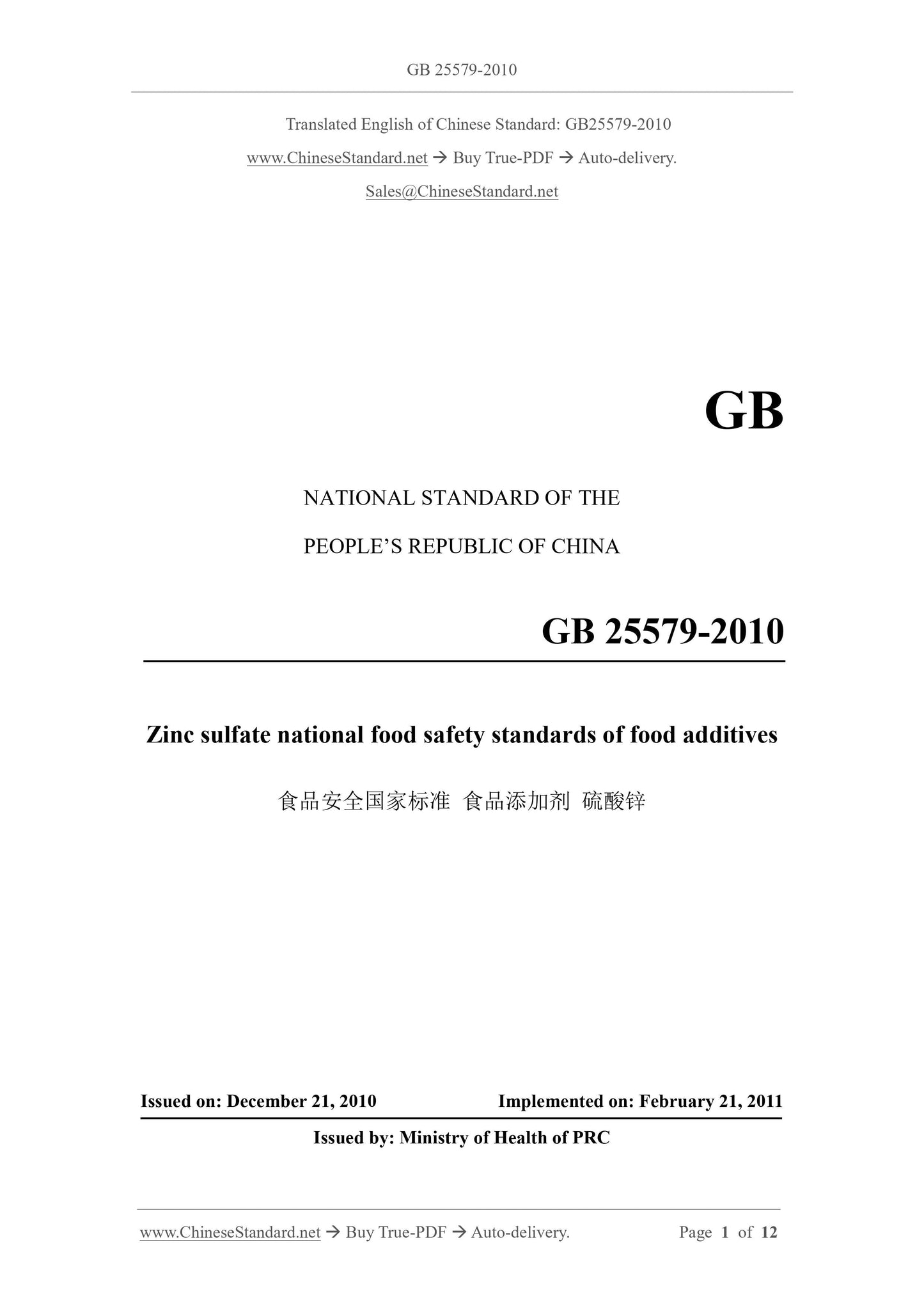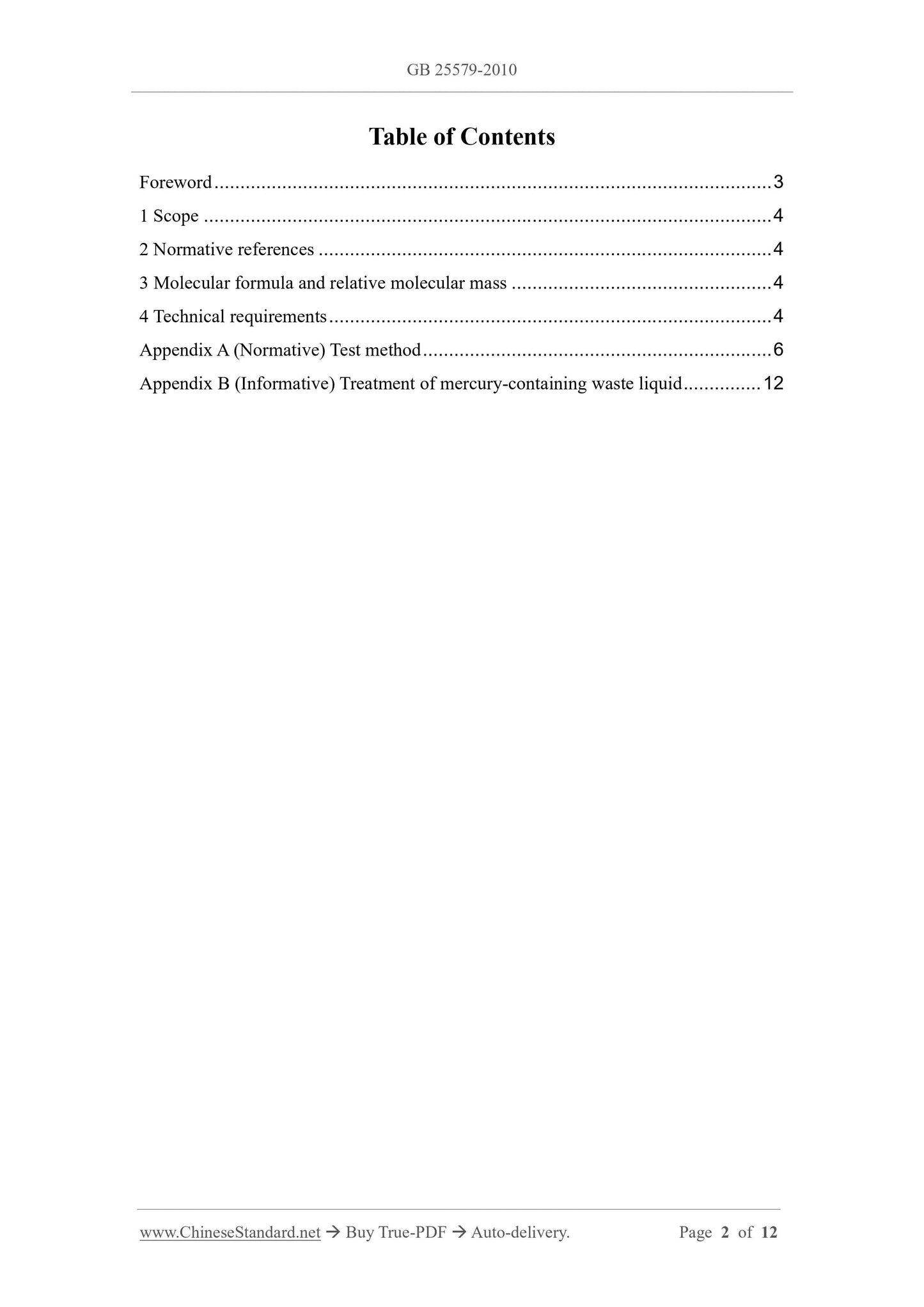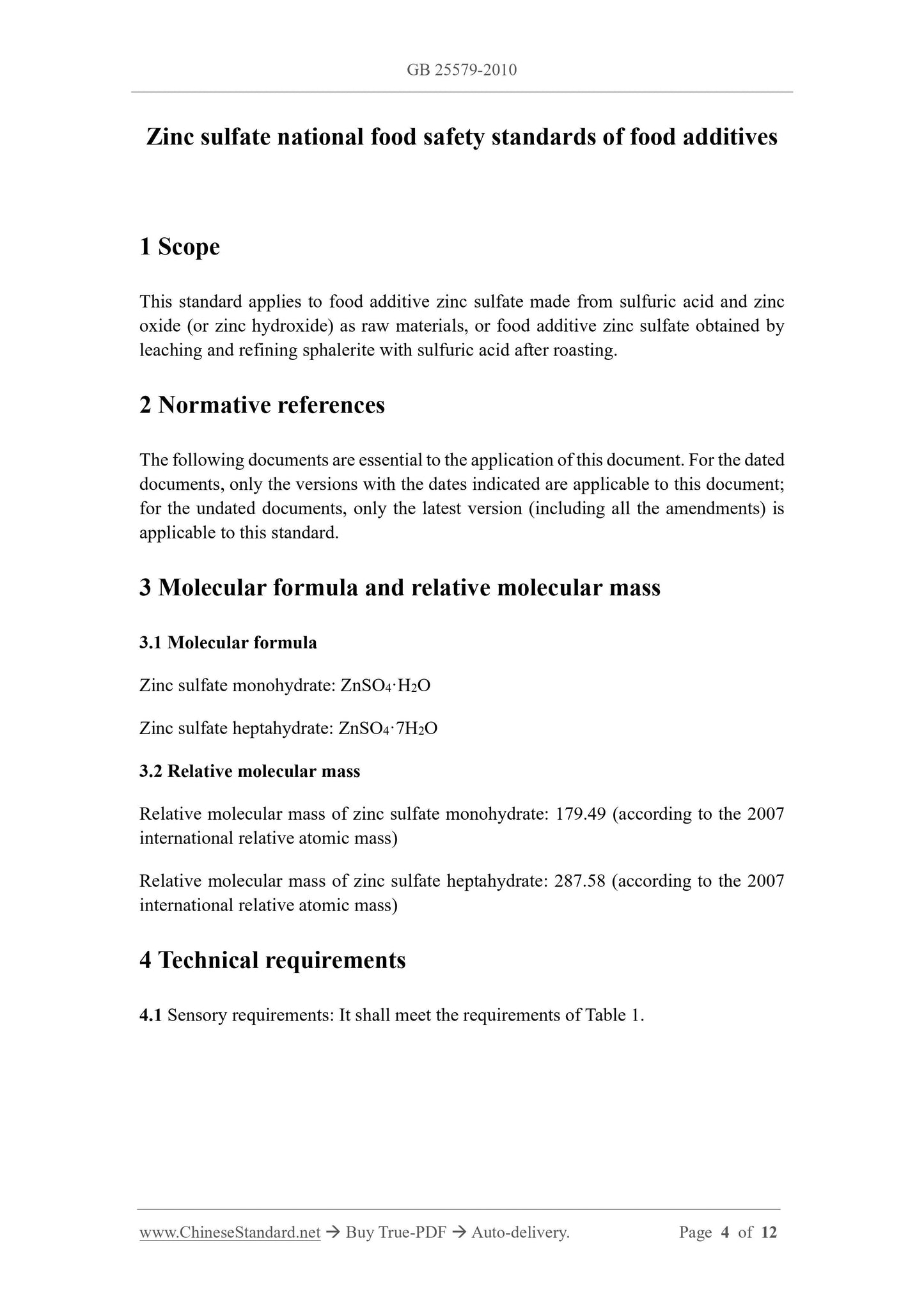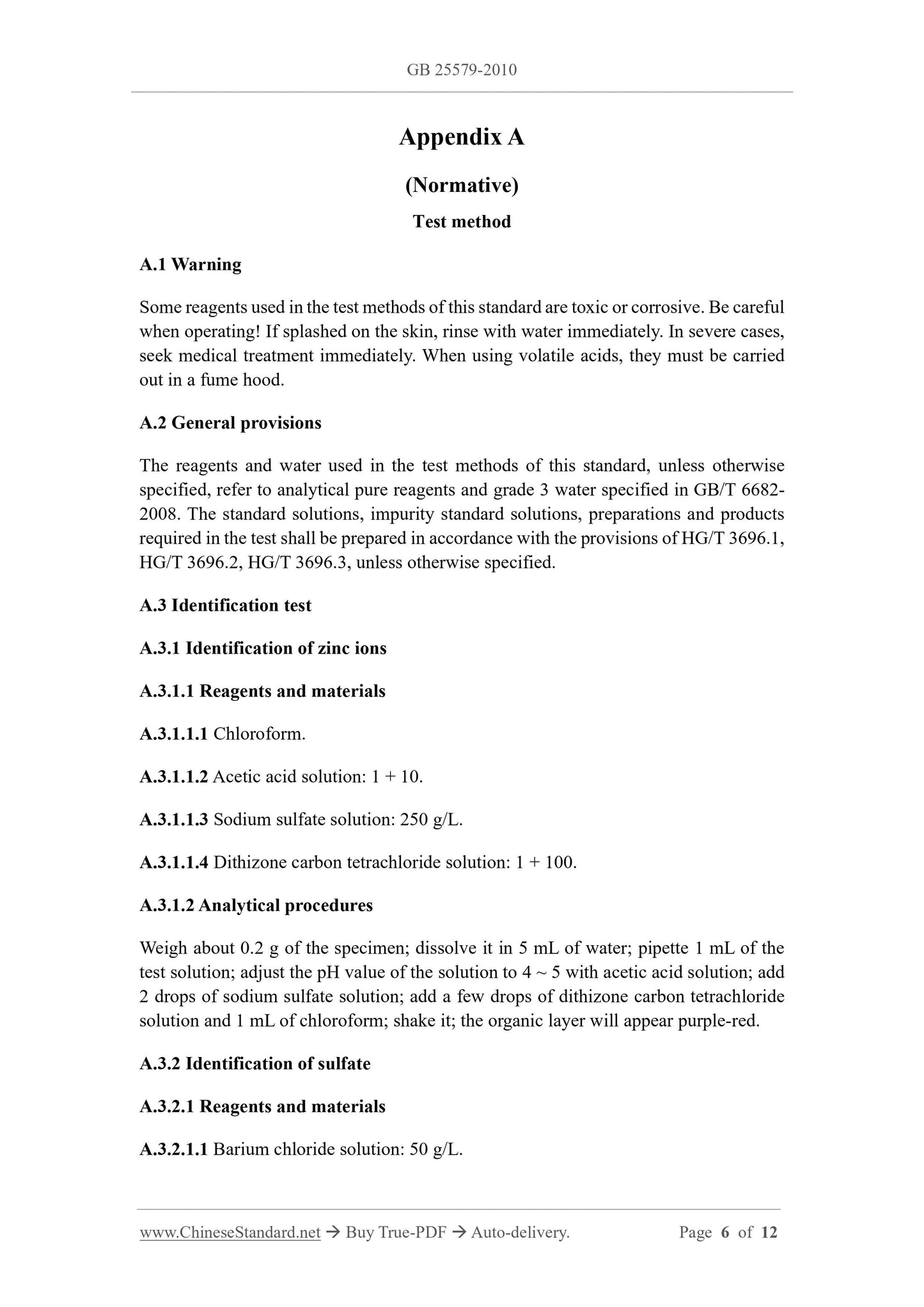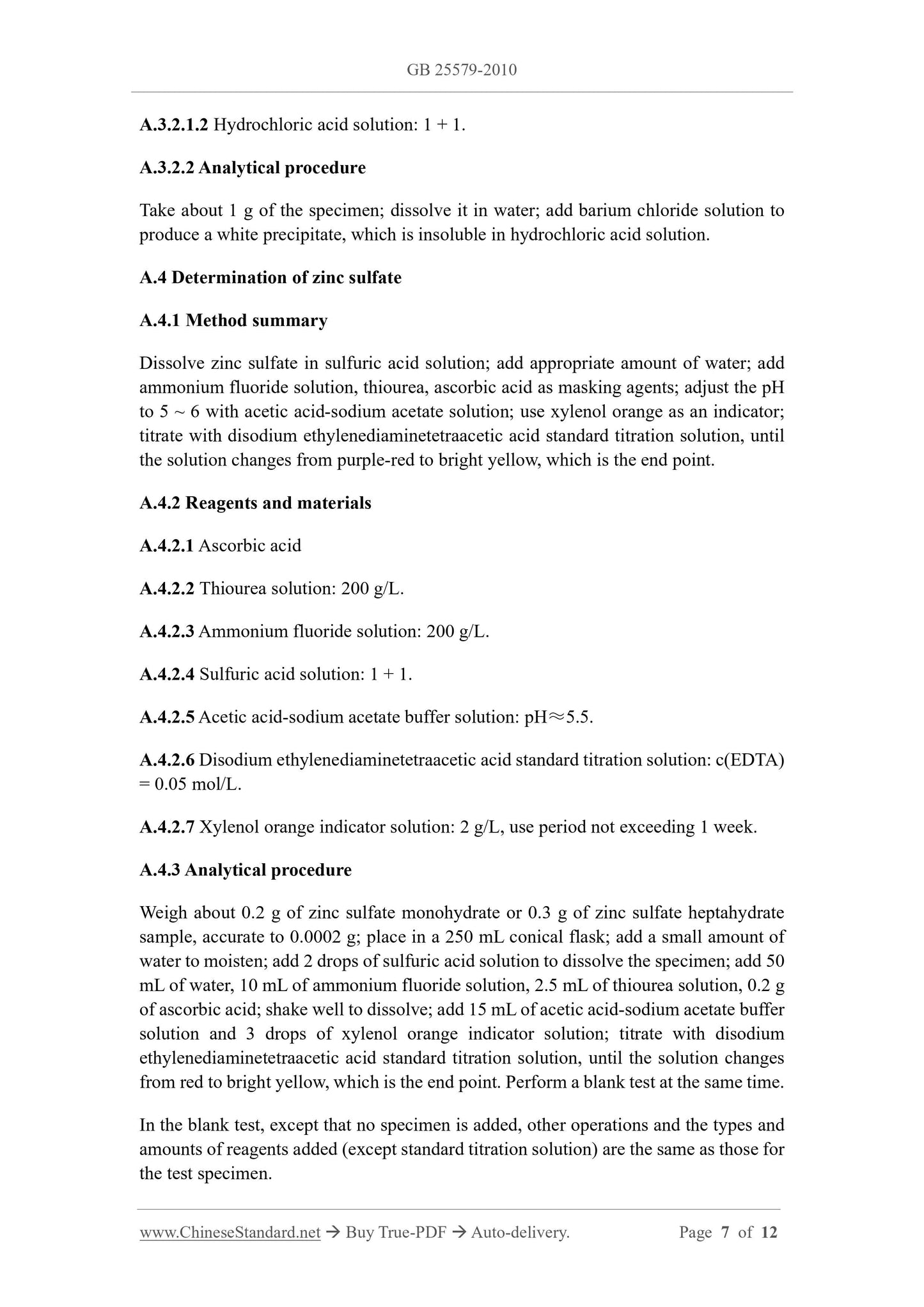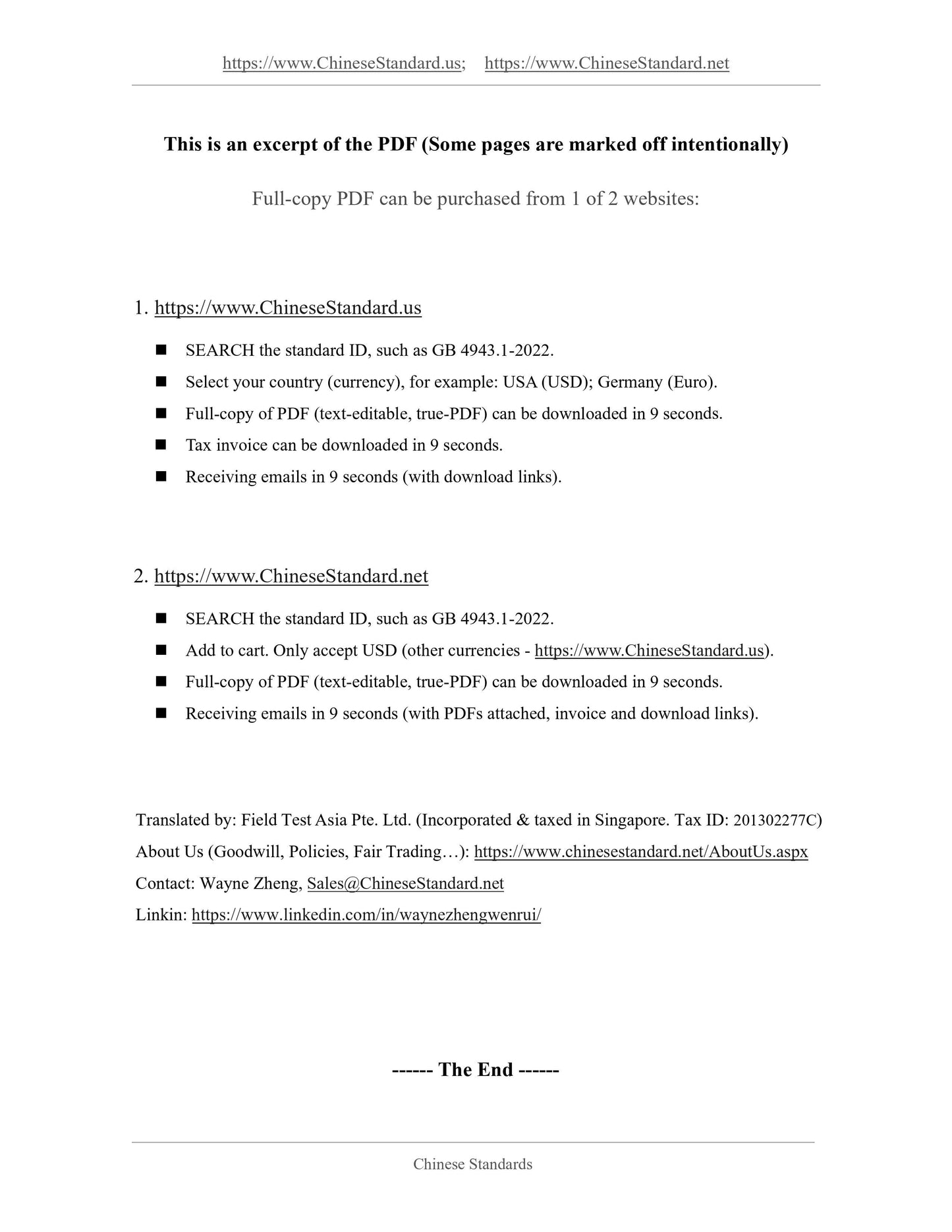1
/
of
7
www.ChineseStandard.us -- Field Test Asia Pte. Ltd.
GB 25579-2010 English PDF
GB 25579-2010 English PDF
Regular price
$190.00
Regular price
Sale price
$190.00
Unit price
/
per
Shipping calculated at checkout.
Couldn't load pickup availability
GB 25579-2010: Zinc sulfate national food safety standards of food additives
Delivery: 9 seconds. Download (and Email) true-PDF + Invoice.Get Quotation: Click GB 25579-2010 (Self-service in 1-minute)
Newer / historical versions: GB 25579-2010
Preview True-PDF
Scope
This standard applies to food additive zinc sulfate made from sulfuric acid and zincoxide (or zinc hydroxide) as raw materials, or food additive zinc sulfate obtained by
leaching and refining sphalerite with sulfuric acid after roasting.
Basic Data
| Standard ID | GB 25579-2010 (GB25579-2010) |
| Description (Translated English) | Zinc sulfate national food safety standards of food additives |
| Sector / Industry | National Standard |
| Classification of Chinese Standard | X40 |
| Classification of International Standard | 67.220 |
| Word Count Estimation | 10,197 |
| Date of Issue | 2010-12-21 |
| Date of Implementation | 2011-02-21 |
| Regulation (derived from) | Ministry of Health Bulletin No. 19 of 2010 |
| Issuing agency(ies) | Ministry of Health of the People's Republic of China |
| Summary | This Chinese standard applies to sulfuric acid and zinc oxide (or zinc hydroxide) for raw materials food additives zinc sulfate, or branded sphalerite by sulfuric acid leaching after burning, food additives derived refined zinc sulfate. |
Share
